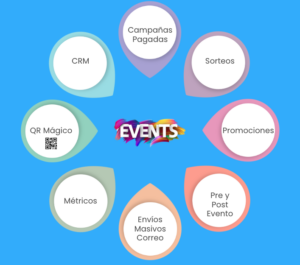LTV or CLTV stands for Lifetime Value or Customer Lifetime Value.
This means that a customer will often buy not only once from you but several times over a period of time. For example, a client that likes your pizza. They may become lifelong fanatics of your restaurant and buy many times.
If you are in the software business using a SaaS model then LTV is the number of months the client pays his subscription.
CLTV Formula
The simplest formula for measuring customer lifetime value is
Customer Lifetime Value = Average Total Order Amount * Average # Purchases Per Year * Gross Profit Margin.
How to apply the customer lifetime value formula with an example:
LTV is effectively the total expected lifetime gross profit per customer.
Here is an example from a gourmet butcher shop:
– Gross Profit Margin: 30%
– Average Payment $: $150
– Average # of Payments: 13
$150 x 13 x 30% = LTV of $585
So the lifetime value of this one client is $585.
What is Customer Acquisition Cost (CAC)?
CAC is how much you have to spend to acquire one new customer.
The two biggest areas where you spend money acquiring customers are:
A. Marketing and Advertising
B. Sales Commissions
Add A and B above plus any related costs and divide by the number of customers to calculate your CAC.
Customer Acquisition Cost (CAC)
So in the butcher shop example:
– Google Ads: $1,000
– Direct Mailers: $1,000
– Sales Commissions: $3,000
– # of new customers: 25
($1,000 + $1,000 + $3,000) / 25 = CAC of $200
It costs you $200 to acquire each of these clients.
Payback Days (PD)
PD is the number of days it takes to recoup your CAC.
Using the butcher example:
– CAC: $200
– Average Payment: $150
$200 / $150 = 1.33 months which equals 40 payback days.
Bringing it all together:
CLTV: $585
CAC: $200
PD: 40
So this means that this client should generate $585 in gross profit.
It costs you $200 to acquire that client.
And it takes 40 days to recuperate the investment made in acquiring that customer.
So now you know all about CLTV, CAC and PD and its importance to running a healthy business.
AVOID THIS HUGE MISTAKE
However, there is a big error most companies are applying. This applies specifically to technology companies that sell software services in SaaS mode but other types of companies would do well to heed the advice here:
(Excerpted from Impossible to Inevitable by Aaron Ross)
“WHY YOU’RE UNDERESTIMATING CUSTOMER LIFETIME VALUE
Everyone in tech talks about Customer Lifetime Value, also known as CLTV or LTV. So they run a magic metric to calculate that their average customer is worth $10,000, and then say you’re supposed to spend a certain amount on Sales and Marketing in order to grow—usually some fraction (one-third or so) of your LTV, or about the first year’s worth of revenue from a customer. Sounds fine—as long as you have the money to fund it.
But the real problem is that this doesn’t go far enough.
Standard LTV calculations don’t account for the “second order” viral and word-of-mouth customers—the ones that come in later, from the first customer referring their friends.
In other words, your average LTV should be higher, because the first customer should get extra credit for helping bring in their friends to your company. By underestimating the value of a customer, you may underinvest overall in acquiring them. Or, more commonly, you invest too much in Sales and Marketing and not enough in Customer Success, which, as you may recall, we believe is 5 times more important. By underestimating the value of a customer, you may underinvest overall in acquiring them. Total Lifetime Revenue from a Single Average SaaS Customer Let’s imagine that sales closes its average enterprise customer for $10,000 a year. Nice. Then, in Year 2, average enterprise customer A adds $2,500 in additional licenses, for $12,500 total. Then in Year 3, they add another 25%, or $15,625 total. So direct revenue over the first three years is $38,125 from that first sale. Most customers last longer than three years, but let’s stop there for now.
By underestimating the value of a customer, you may underinvest overall in acquiring them.
Total Lifetime Revenue from a Single Average SaaS Customer Let’s imagine that sales closes its average enterprise customer for $10,000 a year. Nice.
Then, in Year 2, average enterprise customer A adds $2,500 in additional licenses, for $12,500 total. Then in Year 3, they add another 25%, or $15,625 total. So direct revenue over the first three years is $38,125 from that first sale. Most customers last longer than three years, but let’s stop there for now.
Second-Order Effects
At the end of Year 1, your champion quits Enterprise Customer A, but goes to Enterprise Customer B to do the exact same job, and buys your product again. (This happens about 10% of the time.) So that first sale is actually worth $42,000 (that first $38,000 above times 110%). And then it happens again in Year 2. So it’s really $46,000.
And at the end of Year 1, your champion tells three of her friends about your company. And one of them purchases. (This happens about 30% of the time.)
So now the first sale is actually worth $60,000 with the second-order revenue—as long as you’re making your customers super-duper happy.
So your all-in CLTV, including second-order revenues, could be two times your current estimate.
Go ahead and figure out the perfect ratio of sales and marketing costs to CLTV to share with your board. Remember that the second-order effects compound. This is where Seeds become a growth driver. They’re essential to fast, profitable growth. Your all-in Customer Lifetime Value, including second-order revenues, could be double your current estimate.”
Summary
It is important to not underestimate LTV because then you will invest too little in acquiring new clients and you won’t achieve hyper growth.
What is your LTV?
And how much are you earmarking to acquire new clients?
Source: Book Impossible to Inevitable by Aaron Ross
If you want to find out how SalesForce has continued to grow its sales unstoppably almost since year 1 then you must read this book.
Buy this book on Amazon click here











